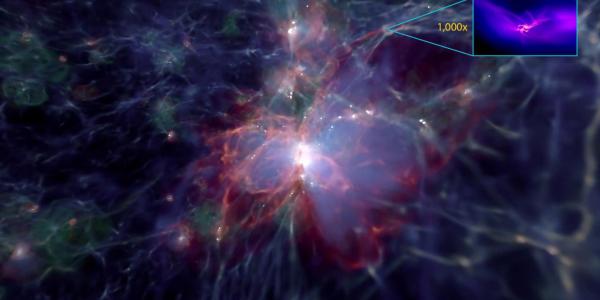Nuclear Physics Seminar with Chris Greene on Nonresonant Density of States Enhancement for Few-Neutron Systems
This seminar will present our recent theoretical investigations of the 4-neutron and 3-neutron systems. Using our adiabatic hyperspherical representation toolkit, we have computed the potential energy curves (energy versus hyperradius) starting from a realistic Hamiltonian for the neutron-neutron interaction. While the resulting potential curves display strong attraction at fixed hyperradii, they are monotonically decreasing functions, signalling that there is no temporary trapping of probability of the type that could produce a bound or quasi-bound tetraneutron state. Further analysis of the potential energy curves suggests, on the basis of physics related to the Efimov effect, that the density of states diverges at zero energy, which might have been misinterpreted in recent experiments that have claimed to see experimental evidence for a quasi-bound resonance.
[1] “Comprehensive study of the three- and four-neutron systems at low energies”, Michael D.Higgins, Chris H. Greene, A. Kievsky, M. Viviani, Phys. Rev. C 103, 024004 (2021).
[2] “Nonresonant Density of States Enhancement at Low Energies for Three or Four Neutrons”, M. D.Higgins, C. H. Greene, A. Kievsky, M. Viviani, Physical Review Letters 125, 052501-1 to -5 (2020).
[3] “Universal few-body physics and cluster formation”, C. H. Greene, P. Giannakeas, and J. Perez-Rios, Rev. Mod. Phys. 89, 035006-1 to -66 (2017).
[4] “Collisions hint that four neutrons form a transient isolated entity", Lee G. Sobotka and Maria Piarulli, Nature News & Views. 606 (7915): 656–657 (2022).

